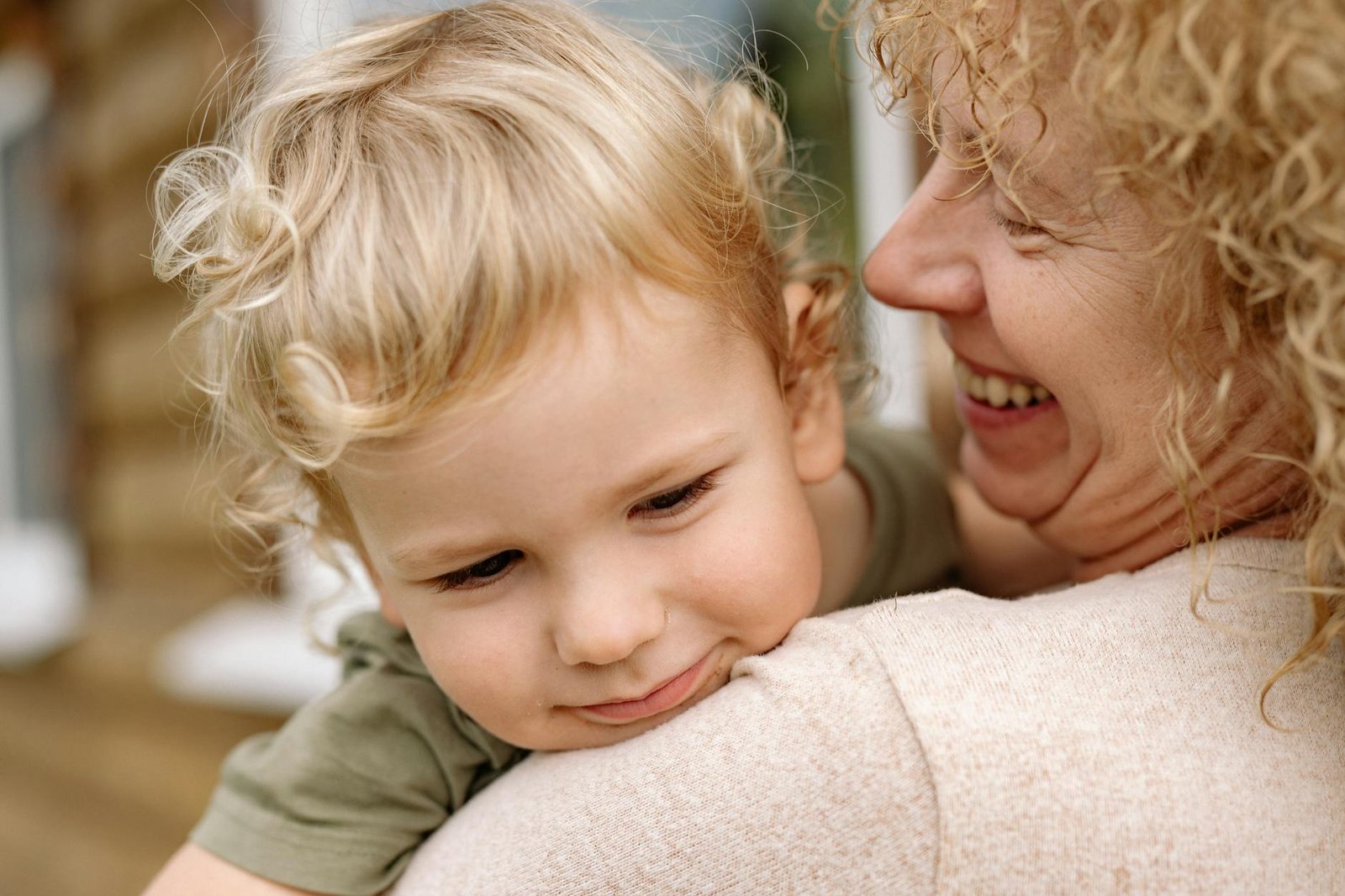Therapies for Relationships
Getting to know Relational Life Therapy
Relational Life Therapy (RLT) isn’t your run-of-the-mill therapy; it’s the brainchild of Terrence Real, a big name in the world of psychotherapy and some successful book-writing. This therapy doesn’t dawdle but gets straight to the meat of things, tackling problems head-on and quickly shaking up behaviours and mending relationships effectively (Relational Life). RLT stands apart by shunning the usual therapy dawdling. Instead, therapists jump right in, creating a shift you can see and feel, often catching clients off-guard in the best ways possible.
At the heart of RLT is a burst through deep-rooted trauma and behaviour issues flowing from inner child work. That’s right, it’s all hands on deck with the partner there, too, creating bonds you’d want to write home about (Relational Life). Armed with mind-shifting tools, it aims to create genuine, hunky-dory relationships that last long past the therapy session’s end.
Terrence Real didn’t just stop at bringing something new to the therapy table. His book “I Don’t Want to Talk about It: Overcoming the Secret Legacy of Male Depression” (1997) echoed far and wide, shining a big, bright light on RLT. With his Relational Life Institute founded in 2002, Real set the stage for handling men’s issues, tangled relationships, and gloomy depressives (GoodTherapy). If you’ve caught him on TV, you already know he’s shouting from the rooftops about the good stuff RLT brings to life.
| Therapy Attributes | Details |
|---|---|
| Developer | Terrence Real |
| Focus | Fast-track change |
| Key Aspects | Diving into trauma, healing inner child |
| Benefits | Building real, lasting bonds |
| Institute | Relational Life Institute, since 2002 |
Taking a First Peek at Relational Therapy Approaches
Relational therapy isn’t about navel-gazing. It’s about the nitty-gritty of how our cultural backgrounds and social setups mess around with our relationships. These approaches reach across the board, speaking to anyone bogged down by relationship snafus and aiming to skewer those internal and external issues (Psychology Today). In the mix is Relational Cultural Theory, which goes deep into the cultural dynamics that play into therapy.
RLT stands proud as a specialized couples counselling tool, slashing through conflicts, urging personal responsibility, rubbing up communication, and feeding the flames of intimacy. It’s a great fit for folks looking to chop down barriers made by society’s pigeonholes about who does what in relationships (GoodTherapy). By zooming in on these core issues, RLT ensures partners rebuild or reinforce stronger, more connective links.
For more juicy details, check out our articles on relational therapy, relational cultural therapy, object relations therapy, and cultural relational therapy.
| Therapy Approach | Key Focus |
|---|---|
| Relational Cultural Theory | Cultural and social factors play a role here |
| Relational Life Therapy | Couples counseling, fixing the conflict bend |
| Uplifting communication and closeness |
Relational Culture Approach
Principles of Relational-Cultural Therapy
Relational-cultural therapy (RCT) recognizes how important relationships are to mental well-being. It’s not just a therapy approach; it’s a shoutout to the importance of having supportive people around. Think of RCT as a guide to building meaningful connections that foster empathy and mutual support, which are essential for emotional health.
Let’s break down some of the main ideas:
- Mutual Empathy: The therapist and client are in this together, y’all. They share feelings, building trust and understanding.
- Mutual Empowerment: It’s about lifting each other through these connections.
- Authenticity: Be real with each other. This helps you both accept yourselves for who you really are.
- Relational Paradox: We’ve all been there—wanting to connect but scared of getting rejected. RCT tackles these mixed feelings.
RCT also embraces the fact that not all of us have the same experiences. It’s especially supportive for folks like older LGBTQ+ adults from different races. This therapy considers their specific hurdles (The Professional Counselor Journal).
Applying Relational-Cultural Theory
Putting Relational-Cultural Theory (RCT) into action means looking at the client’s whole situation, including their cultural and social background. Therapists aim to create a welcoming environment where clients feel free to explore their identity and life stories without any side-eye.
Here’s how therapists make it happen:
- Building a Connection: Start by earning trust and showing empathy. It’s all about truly listening and validating what’s going on with the client.
- Empowerment through Interaction: Have chats that make clients feel stronger, affirming their own stories and talents.
- Exploring Relational Dynamics: Explore how all the relationships in their lives—like with family, partners, and even wider circles—impact their mental health.
- Understanding Social Identities: Work on challenges tied to social identities and cross-cutting oppressions. The key for marginalized groups like older LGBTQ+ folks of colour (The Professional Counselor Journal).
- Being True to Oneself: Urge clients to embrace their real selves, building self-love and resilience.
These tactics help therapists support clients in managing their relationships and life situations. Curious about more relational therapies? Dig deeper into our articles on relational therapy and relational cultural therapy.
RCT isn’t just a tool for navigating issues; it’s a catalyst for growth and forging strong bonds, both in therapy sessions and life outside. Diving into RCT practices equips therapists to help folks achieve richer, healthier relationships while acknowledging the bigger picture with cultural and societal influences in their lives.
Object Relations Therapy
Object Relations Therapy digs into the nitty-gritty of how our earliest back-and-forth with mom and dad, or whoever raised us, beams our personality and behaviour. By zeroing in on how our first relationships morph into mental blueprints or “objects,” this therapy reveals how they steer how we deal with others and manage our feelings later on.
Exploring Object Relations Therapy
In the world of Object Relations Therapy, “objects” aren’t your typical things. They’re the mini-versions of key people, especially your go-to folks from when you were learning to walk. These mental props mould how you see yourself and connect with others, affecting everything from anger levels to how you chat with friends. What is the therapy’s mission? To dig up and tweak these inner objects, smoothing out any bumpy relationship roads.
Followers of this approach figure that the kind of cuddle, care, or chaos you experienced as a kid sticks with you. These early imprints shape thoughts, emotions, and habits you carry like a badge of honour your entire life.
Elements of Object Relations
Here are some nuts and bolts behind Object Relations Therapy:
- Internal Objects: Imagined personas of influential people from your early days, like those who taught you right from wrong. These shadowy figures play a huge part in how you react to and feel about others.
- Splitting: Seeing folks in absolutes as either awesome or terrible is your mind’s way of dodging mixed emotions.
- Projection: Tossing your not-so-great feelings onto someone else, especially in close relationships.
- Introjection: Swallowing traits of key figures, usually caregivers, and letting them mess with your identity and actions.
| Element | Description |
|---|---|
| Internal Objects | Imagined personas of important figures from early life affecting future connections. |
| Splitting | Viewing others as all good or all bad to steer clear of mixed signals. |
| Projection | Slinging your unwanted feelings onto another person. |
| Introjection | Letting other people’s traits become part of your own personal makeup. |
Grasping these elements lets therapists crack open the heart of relationship woes their clients grapple with. By poking around in these mental objects and how they boss clients around, therapists can guide folks to better, friendlier patterns with others and boost their mental peace.
If you’re itching to see how this therapy squares up against other relationship-centred methods, check out our pieces on relational therapy and cultural relational therapy. To get a lay of the land on relational life therapy and the role it plays in the mental health realm, peek at our sections on relational cultural therapy and object relations therapy.
Cultural Relational Therapy
Cultural Factors in Therapy
Cultural Relational Therapy shines a light on the importance of cultural factors in therapy. It’s all about acknowledging someone’s cultural story to make therapy meaningful and truly helpful. It’s designed for a mix of folks – taking into account different social identities like race, gender, and sexuality.
Researchers highlight that older LGBTQ+ folks, especially those of colour, often deal with loneliness, grief, and more as they age. They face a double whammy of racism and gender bias. But knowing these struggles can help make therapy a safe zone for healing.
| Cultural Factor | Impact on Therapy |
|---|---|
| Race | Affects experiences of racism, influencing trust and how safe therapy feels |
| Gender | Shapes ideas on gender roles and affects relationship dynamics |
| Sexuality | Deals with biases faced by LGBTQ+ clients |
| Age | Tackles ageism and generation gaps |
| Socioeconomic Status | Considers the strains of poverty and financial issues |
Incorporating these cultural dynamics lets therapy touch on real-life experiences. For instance, Trust-Based Relational Intervention (TBRI) uses empowerment, connection, and correction to support at-risk kids and teens effectively.
Importance of Cultural Relational Therapy
Deeply rooted in relational-cultural theory (RCT), this therapy makes it crucial for therapists to understand the cultures that shape relationships. It’s an absolute must for working with diverse clients and ensures therapy is not just a process but an enriching journey.
RCT amps up relational awareness and seeks to bridge the gap between people and various relationship frameworks – from therapists to families and society. It values being real and growing within relationships (The Professional Counselor Journal).
| Objective | Description |
|---|---|
| Creating Safe Spaces | Making sure clients feel heard and valued |
| Addressing Social Identities | Grasping the client’s race, gender, and more |
| Managing Intersectional Oppressions | Tackling racism, heterosexism, genderism, and others |
| Fostering Trust and Authenticity | Building genuine and trustworthy bonds |
| Enabling Growth | Zoning in on relational smarts and personal growth |
Therapists using these principles can better aid individuals facing multiple forms of suppression. This approach is valuable, as it makes therapy more open and effective for a variety of people.
Check out more on how cultural twists impact therapy by exploring cultural relational therapy. Other related methods worth a peek include relational therapy and object relations therapy.
Application in Mental Health
Therapeutic Benefits
Relational Life Therapy (RLT) can be a real game-changer for folks looking to build stronger connections. It’s not just for those awkward therapy couch sessions but extends to everyday life, helping both singles and couples nurture relationships that feel genuine and rewarding. By focusing on how we talk and connect emotionally, RLT gives people the tools they need to keep those meaningful ties alive long after the therapy sessions. This leads to real, lasting changes, inspiring personal growth and making relationships feel more fulfilling. Relational Life.
| Therapeutic Benefit | Description |
|---|---|
| Communication Skills | Makes chatting with your partner more insightful and compassionate. |
| Emotional Connection | Tightens the emotional bonds, boosting intimacy and mutual understanding. |
| Conflict Resolution | Unlocks ways to handle disagreements without the drama. |
| Self-Improvement | Encourages you to grow and know yourself better. |
Getting a grip on these benefits sheds light on why relational therapy matters in mental health, especially for those muddling through relationship dramas and personal struggles.
Addressing Trauma and Relationships
Trauma can cast a long shadow over relationships, making it super important to tackle these challenges during therapy. The things that lead to trauma aren’t pretty, including abuse (whether physical, emotional, or sexual), natural disasters, and hard experiences such as medical procedures. Kids in the American foster system are especially at risk, sporting PTSD rates more than double that of war veterans. PMC.
When trauma keeps piling up, it can mess with how kids and adults interact, causing hiccups in their social skills, weird coping habits, and even changes in brain chemistry. It’s key for mental health pros to spot and treat these heavy impacts. PMC.
| Trauma Factor | Impact |
|---|---|
| Physical Abuse | Can lead to shaky emotions and trust issues. |
| Emotional Abuse | Knocks confidence and twists self-image. |
| Sexual Abuse | Can seriously mess up how one attaches to others. |
| Natural Disasters | Add layers of trauma and emotional pain. |
| Medical Interventions | Stress and anxiety can skyrocket, shaking mental health. |
Combatting trauma in therapy means whipping up a haven filled with support and trust. Trust-Based Relational Intervention (TBRI) is a solid start, focusing on meeting kids’ basic needs while promoting structure and security. It covers everything from what they eat to how much they sleep and drink, improving behaviour and emotional health overall. PMC.
Through these vital elements, relational therapy pulls out all the stops to heal trauma and help mend strained relationships. Whether you’re a therapist or someone wanting to know more about these healing techniques, there are plenty of training programs and best practices to tap into, like relational therapy, relational cultural therapy, and object relations therapy.
Practising Relational Therapy
Training Programs
Mental health pros diving into relational life therapy can’t just wing it—they need some solid training. The program’s got a layered approach, offering courses left and right to master the tricks of the trade and ways to merge attachment theory with these therapy methods. The classes, often led by the mastermind himself, Terry Real, offer a hands-on approach.
Training Course Levels:
- Fundamental Courses:
- Get your feet wet: Intro to Relational Life Therapy
- Core tips and tactics for beginners
- Intermediate Courses:
- Fine-tuning strategies with advanced techniques
- Digging into case studies for practice
- Advanced Courses:
- Weaving in attachment theory
- Navigating tricky cases
- Guided practice under watchful eyes
This training soup-to-nuts makes sure therapists are locked and loaded to tackle a buffet of relationship woes—be it from shaky childhood bonds, cultural sticks, or past trauma.
Implementing Relational Therapy Techniques
Rolling out these therapy tricks in the real world is where the rubber meets the road. Here’s a sneak peek into the bread-and-butter techniques in relational therapy:
- Setting Boundaries:
- Spelling out where you stand
- Knowing and respecting where others draw the line
- Enhancing Emotional Intelligence:
- Recognizing and sharing feelings in the right way
- Building up that empathy muscle
- Conflict Resolution:
- Keeping the peace with healthy conflict hacks
- Listening good, talking sense
| Technique | Description |
|---|---|
| Setting Boundaries | Crystal-clear talk about limits, both personal and others’. |
| Enhancing Emotional Intelligence | Guiding folks to lock onto their emotions and express them with empathy. |
| Conflict Resolution | Dishing out practical advice for patching up rifts the right way, with active listening and respect. |
By combining these tactics, therapists can supercharge individuals’ and couples’ relationship gears. Tapping into other approaches, like relational cultural therapy and object relations therapy, adds an extra layer of understanding for tackling cultural or deep-rooted emotional hurdles.
For a deep dive into how culture fits into the therapy puzzle, swing by our cultural relational therapy spot. Plus, seeing how styles like object relations therapy play out could add more oomph to relational treatment.
Keeping one’s finger on the pulse through workshops, chats with peers, and sage advice from mentors ensures that therapists keep bringing their A-game. This ensures clients get nothing but top-notch care every session.











